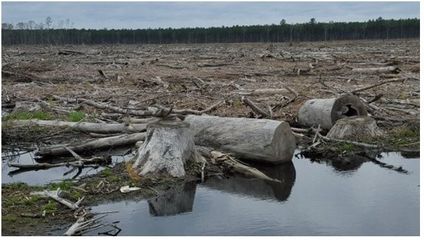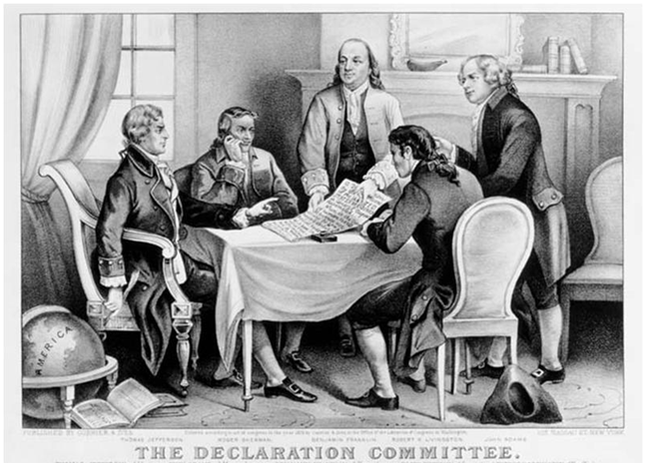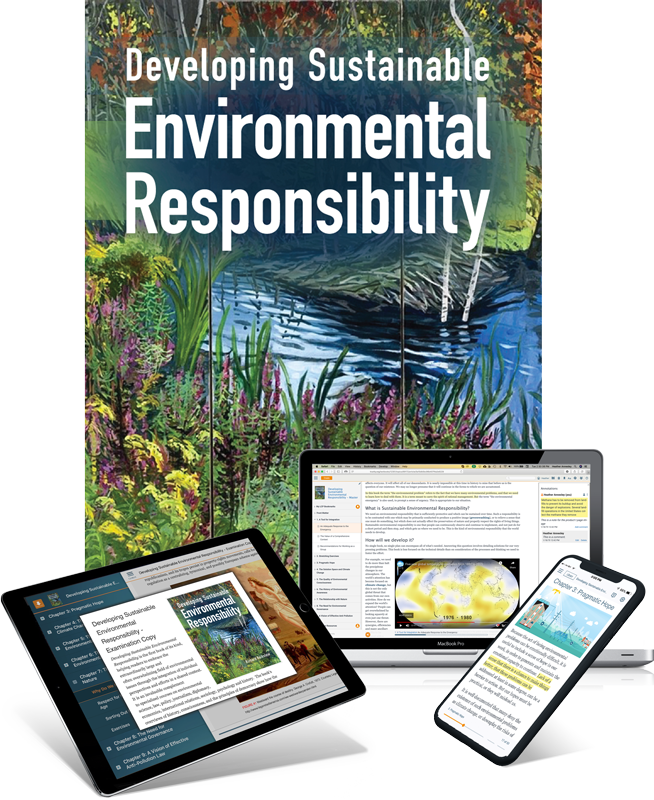Sustainability Policy and Events, Law for Sustainability, Context and Purpose, Activity
Jost Haller, St. George Slaying the Dragon, Unterlinden Museum, Colmar, France, 15th Century, photo by Vincent Desjardin, no alteration. Creative Commons by 2.0: https://creativecommons.org/licenses/by/2.0/deed.en.
For too long we – all humans of today, plus all other living things – have been victims of monstrous misconceptions, roaming like vicious dragons over the lands of this green earth, scorching it and terrifying everyone. These are the misconceptions bred by the compulsion to make money at all costs. The placement of the profit imperative at the top of the priority pyramid has led otherwise sensible people to reach into the underworld and pull poisons from hell and pour them into our seas, skies, and soils, where they have burned in rapid and slow fashion to the ruin of more than anyone could calculate.
But as in the stories, of Hercules, Sigurd, Rustam, Indra, Marduk, Gilgamesh, and so many others, we also know that the reign of the monsters can end, if someone will stand up to them, and use the right tools. For the purpose of simplicity that tool is often a sword, but it can be a mirror (Perseus), a bird bringing knowledge of a chink in the dragon’s armor (the Hobbit), or an oxygen-destruction device (Godzilla). Today, we – all citizens – have been given a tool – the Green New Deal – and it will work if we decide to use it.
The virtue of this tool is that it is infinitely flexible. At this point it is fashioned as a Congressional Resolution, and its features are recognitions and aspirations. For the tool to work, to be sharp enough to slay the dragon of our addiction to money generated by poisonous fuels and the illusions of comfort and convenience it produces, we only have to perceive that such a program is needed – and support its goals. Hope has arrived in the form of a sensible posture towards our present and future prospects, and it can be manifested by acceptance. The dragons of greed, pollution, cynicism, selfishness, blindness and rank irresponsibility can be defeated and their day cast aside for the light of reason, which can perform the action of a hero if we give to it our mindful attention and assent.
That such a resolution is before Congress, with 69 proponents in the House and 12 in the Senate, is a sign of the maturation of the environmental movement. Modern environmental consciousness began as something to worry about, and then we got tired of worrying about it, so fretful that it would cost too much to address that a mindless destruction of environmental protections gained political support, an emotional catastrophe of mythical dimension, an abandonment of the project of developing social responsibility, a reversal of the positive trend towards sensible civilization. But while the teardown was building strength, first under Nixon, then under Reagan, then under the second Bush, and now under he who is not here named, in case after case it was being proven that environmental investments are actually good for us.
One big win, hardly gaining any public attention, was the billions of pounds of toxics use eliminated from commerce by the pollution prevention movement, saving companies billions of dollars at the same time. The next big win was the energy efficiency movement, and then we had the success of solar, and wind, and now energy storage. We stopped major forms of pollution and didn’t hurt ourselves or the economy. Yes, some suffered from the loss of dirty jobs. But that didn’t have to happen – had we invested in helping people through the transition, that story could have turned out differently. The point is that there has been far too little attention to the fact that it makes sense to transform to clean and safe technologies and practices. It makes business sense, it makes moral sense, it stands to reason, it stands up to challenge. The Green New Deal Resolution[1] uses that truth like a sword.
It proceeds from the recognition that investing in making our planet safe and not poisoning the bodies of every living thing can also create millions of good jobs while improving infrastructure, buildings, agriculture – everything we do. It is not wishful thinking, mythical exaggeration or ludicrous hope that recognizes this. Investing in the great transformation of our built systems so that they exist sensibly within the biosphere only makes sense, and it is a dark mystical delusion that motivates opposition to the dawning of this new day. In many of the myths, dragons are not just breathers of fire, but have powers of mind control. You don’t want to let them look in your eyes or you will become transfixed. That is what has happened to modern civilization. It has been fixed to the spot that the dragon wants us to stay in. But this is a hero-story that every citizen can enjoy. All we have to do is open our eyes and hearts to the fact that we don’t need to continue poisoning ourselves, and the sword of truth will bring a new day.
[1] See the complete resolution as introduced in the House Feb. 7 by Alexandria Ocasio-Cortez: file:///C:/Users/rick/Documents/Courses/The%20Green%20New%20Deal%20resolution.pdf or see Ed Markey's summary: https://www.markey.senate.gov/news/press-releases/senator-markey-and-rep-ocasio-cortez-introduce-green-new-deal-resolution.
But as in the stories, of Hercules, Sigurd, Rustam, Indra, Marduk, Gilgamesh, and so many others, we also know that the reign of the monsters can end, if someone will stand up to them, and use the right tools. For the purpose of simplicity that tool is often a sword, but it can be a mirror (Perseus), a bird bringing knowledge of a chink in the dragon’s armor (the Hobbit), or an oxygen-destruction device (Godzilla). Today, we – all citizens – have been given a tool – the Green New Deal – and it will work if we decide to use it.
The virtue of this tool is that it is infinitely flexible. At this point it is fashioned as a Congressional Resolution, and its features are recognitions and aspirations. For the tool to work, to be sharp enough to slay the dragon of our addiction to money generated by poisonous fuels and the illusions of comfort and convenience it produces, we only have to perceive that such a program is needed – and support its goals. Hope has arrived in the form of a sensible posture towards our present and future prospects, and it can be manifested by acceptance. The dragons of greed, pollution, cynicism, selfishness, blindness and rank irresponsibility can be defeated and their day cast aside for the light of reason, which can perform the action of a hero if we give to it our mindful attention and assent.
That such a resolution is before Congress, with 69 proponents in the House and 12 in the Senate, is a sign of the maturation of the environmental movement. Modern environmental consciousness began as something to worry about, and then we got tired of worrying about it, so fretful that it would cost too much to address that a mindless destruction of environmental protections gained political support, an emotional catastrophe of mythical dimension, an abandonment of the project of developing social responsibility, a reversal of the positive trend towards sensible civilization. But while the teardown was building strength, first under Nixon, then under Reagan, then under the second Bush, and now under he who is not here named, in case after case it was being proven that environmental investments are actually good for us.
One big win, hardly gaining any public attention, was the billions of pounds of toxics use eliminated from commerce by the pollution prevention movement, saving companies billions of dollars at the same time. The next big win was the energy efficiency movement, and then we had the success of solar, and wind, and now energy storage. We stopped major forms of pollution and didn’t hurt ourselves or the economy. Yes, some suffered from the loss of dirty jobs. But that didn’t have to happen – had we invested in helping people through the transition, that story could have turned out differently. The point is that there has been far too little attention to the fact that it makes sense to transform to clean and safe technologies and practices. It makes business sense, it makes moral sense, it stands to reason, it stands up to challenge. The Green New Deal Resolution[1] uses that truth like a sword.
It proceeds from the recognition that investing in making our planet safe and not poisoning the bodies of every living thing can also create millions of good jobs while improving infrastructure, buildings, agriculture – everything we do. It is not wishful thinking, mythical exaggeration or ludicrous hope that recognizes this. Investing in the great transformation of our built systems so that they exist sensibly within the biosphere only makes sense, and it is a dark mystical delusion that motivates opposition to the dawning of this new day. In many of the myths, dragons are not just breathers of fire, but have powers of mind control. You don’t want to let them look in your eyes or you will become transfixed. That is what has happened to modern civilization. It has been fixed to the spot that the dragon wants us to stay in. But this is a hero-story that every citizen can enjoy. All we have to do is open our eyes and hearts to the fact that we don’t need to continue poisoning ourselves, and the sword of truth will bring a new day.
[1] See the complete resolution as introduced in the House Feb. 7 by Alexandria Ocasio-Cortez: file:///C:/Users/rick/Documents/Courses/The%20Green%20New%20Deal%20resolution.pdf or see Ed Markey's summary: https://www.markey.senate.gov/news/press-releases/senator-markey-and-rep-ocasio-cortez-introduce-green-new-deal-resolution.
ACTIVITY - help bring in that new day.
Step One. Think about who needs to be convinced of the importance of supporting the Green New Deal, and about specific things it should do, specific actions that should be taken. In addition to representatives at all levels of government, there are influential people, key professional and trade associations, nonprofit organizations, newspapers, radio shows. Who are the commentators and what are the platforms where support can make a difference, where the vision of the tools and actions can be formed so that people don't regard this proposal as pie in the sky? What are the arguments you can use to make people see that this is real, that this is our chance to work together and make a world that can survive, and in which everyone benefits?
Step Two. Write and speak your mind.
Step Three. Consider all the things that can go wrong - anticipate the complaints and questions and confusions. Prepare yourself to welcome constructive criticism and make sure it does not blunt our forward movement. We will not progress by denying the potential problems with the plan, but by addressing them. Do not be impatient with others who do not have the vision. Help them see.
Step Four. Strategize how to overcome. Do this by yourself, and do it with others. Make it a habit and you will get good at it.
Step One. Think about who needs to be convinced of the importance of supporting the Green New Deal, and about specific things it should do, specific actions that should be taken. In addition to representatives at all levels of government, there are influential people, key professional and trade associations, nonprofit organizations, newspapers, radio shows. Who are the commentators and what are the platforms where support can make a difference, where the vision of the tools and actions can be formed so that people don't regard this proposal as pie in the sky? What are the arguments you can use to make people see that this is real, that this is our chance to work together and make a world that can survive, and in which everyone benefits?
Step Two. Write and speak your mind.
Step Three. Consider all the things that can go wrong - anticipate the complaints and questions and confusions. Prepare yourself to welcome constructive criticism and make sure it does not blunt our forward movement. We will not progress by denying the potential problems with the plan, but by addressing them. Do not be impatient with others who do not have the vision. Help them see.
Step Four. Strategize how to overcome. Do this by yourself, and do it with others. Make it a habit and you will get good at it.





 RSS Feed
RSS Feed

